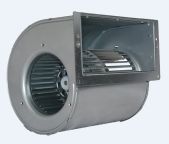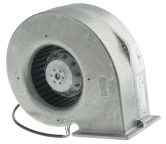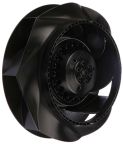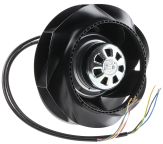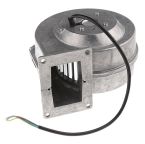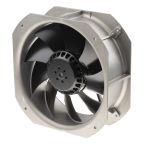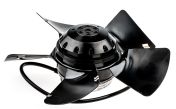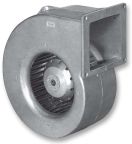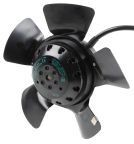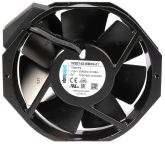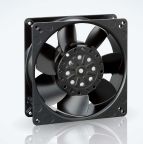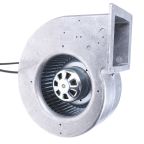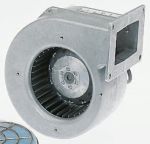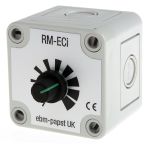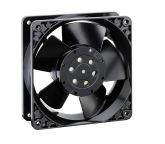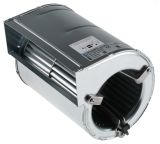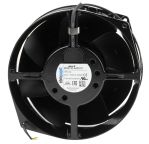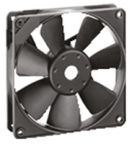In Stock
- RS Stock No. 876-5162
- Mfr. Part No. D3G133-BF05-14
- Brand ebm-papst
- Supply Voltage -
- Blower Type Centrifugal
- AC or DC Operation -
- Air Flow -
Each
£323.83(exc. VAT)
In Stock
- RS Stock No. 218-3191
- Mfr. Part No. G2E140-AL40-01
- Brand ebm-papst
- Supply Voltage 230 V ac
- Blower Type Centrifugal
- AC or DC Operation AC
- Air Flow 385m³/h
Each
£310.94(exc. VAT)
In Stock
- RS Stock No. 841-4911
- Mfr. Part No. R2E190-RA26-05
- Brand ebm-papst
- Supply Voltage 230 V ac
- Blower Type Centrifugal
- AC or DC Operation AC
- Air Flow 540m³/h
Each
£94.84(exc. VAT)
In Stock
- RS Stock No. 830-3023
- Mfr. Part No. R3G190-RC05-03
- Brand ebm-papst
- Supply Voltage 230 V ac
- Blower Type Centrifugal
- AC or DC Operation AC
- Air Flow 735m³/h
Each
£232.21(exc. VAT)
In Stock
- RS Stock No. 218-3208
- Mfr. Part No. G2E120-AR77-01
- Brand ebm-papst
- Supply Voltage 230 V ac
- Blower Type Centrifugal
- AC or DC Operation AC
- Air Flow 260m³/h
Each
£270.85(exc. VAT)
In Stock
- RS Stock No. 218-3040
- Mfr. Part No. W2E200-HH38-01
- Brand ebm-papst
- Dimensions 225 x 225 x 80mm
- Supply Voltage 230 V ac
- AC or DC Operation AC
- Height 225mm
Each
£209.77(exc. VAT)
In Stock
- RS Stock No. 826-1054
- Mfr. Part No. A2E250-AE65-02
- Brand ebm-papst
- Dimensions 250 x 83mm
- Supply Voltage 230 V ac
- AC or DC Operation AC
- Height -
Each
£207.77(exc. VAT)
In Stock
- RS Stock No. 332-4113
- Mfr. Part No. G2E140-AI28-A5
- Brand ebm-papst
- Supply Voltage 230 V ac
- Blower Type Centrifugal
- AC or DC Operation AC
- Air Flow 500m³/h
Each
£399.36(exc. VAT)
In Stock
- RS Stock No. 826-1001
- Mfr. Part No. A2D200-AA02-01
- Brand ebm-papst
- Dimensions 195 x 73mm
- Supply Voltage 230 V ac, 400 V ac
- AC or DC Operation AC
- Height -
Each
£207.40(exc. VAT)
In Stock
- RS Stock No. 434-9876
- Mfr. Part No. W2E142-BB05-01
- Brand ebm-papst
- Dimensions 172 x 150 x 38mm
- Supply Voltage 115 V ac
- AC or DC Operation AC
- Height 150mm
Each
£104.36(exc. VAT)
In Stock
- RS Stock No. 468-4983
- Mfr. Part No. 5656S
- Brand ebm-papst
- Dimensions 135 x 135 x 38mm
- Supply Voltage 230 V ac
- AC or DC Operation AC
- Height 135mm
Each
£89.85(exc. VAT)
In Stock
Better World
- RS Stock No. 841-4909
- Mfr. Part No. G3G146-FK07-02
- Brand ebm-papst
- Supply Voltage 230 V ac
- Blower Type Centrifugal
- AC or DC Operation AC
- Air Flow 650m³/h
Each
£453.48(exc. VAT)
In Stock
- RS Stock No. 233-9439
- Mfr. Part No. G4E180-GS11-01
- Brand ebm-papst
- Supply Voltage 230 V ac
- Blower Type Centrifugal
- AC or DC Operation AC
- Air Flow 910m³/h
Each
£535.63(exc. VAT)
In Stock
- RS Stock No. 541-3984
- Mfr. Part No. RMECI
- Brand ebm-papst
- For Use With ebm-papst ECi Fans
- Speed Settings Infinitely Variable
- Maximum Current 1.1mA
- Output Configuration -
Each
£46.11(exc. VAT)
In Stock
- RS Stock No. 101-8052
- Mfr. Part No. 4650N
- Brand ebm-papst
- Dimensions 119 x 119 x 38mm
- Supply Voltage 230 V ac
- AC or DC Operation AC
- Height 119mm
Each
£36.94(exc. VAT)
In Stock
- RS Stock No. 826-1118
- Mfr. Part No. D2E133-AM47-01
- Brand ebm-papst
- Supply Voltage 230 V ac
- Blower Type Centrifugal
- AC or DC Operation AC
- Air Flow 700m³/h
Each
£300.85(exc. VAT)
In Stock
- RS Stock No. 283-5558
- Mfr. Part No. 4586Z
- Brand ebm-papst
- Dimensions -
- Supply Voltage 230 V ac
- AC or DC Operation -
- Height -
Each
£58.51(exc. VAT)
In Stock
- RS Stock No. 223-095
- Mfr. Part No. G2E140-AB17-50
- Brand ebm-papst
- Supply Voltage 230 V ac
- Blower Type Centrifugal
- AC or DC Operation AC
- Air Flow 230m³/h
Each
£390.10(exc. VAT)
In Stock
- RS Stock No. 771-9108
- Mfr. Part No. W2S130-AA03-01
- Brand ebm-papst
- Dimensions 150 x 55mm
- Supply Voltage 230 V ac
- AC or DC Operation AC
- Height -
Each
£94.87(exc. VAT)
In Stock
- RS Stock No. 825-6541
- Mfr. Part No. 4414FG
- Brand ebm-papst
- Dimensions 119 x 119 x 25mm
- Supply Voltage 24 V dc
- AC or DC Operation DC
- Height 119mm
Each
£27.74(exc. VAT)
Chelmsford Business Park, Chelmsford, Essex, CM2 5EZ, United Kingdom

